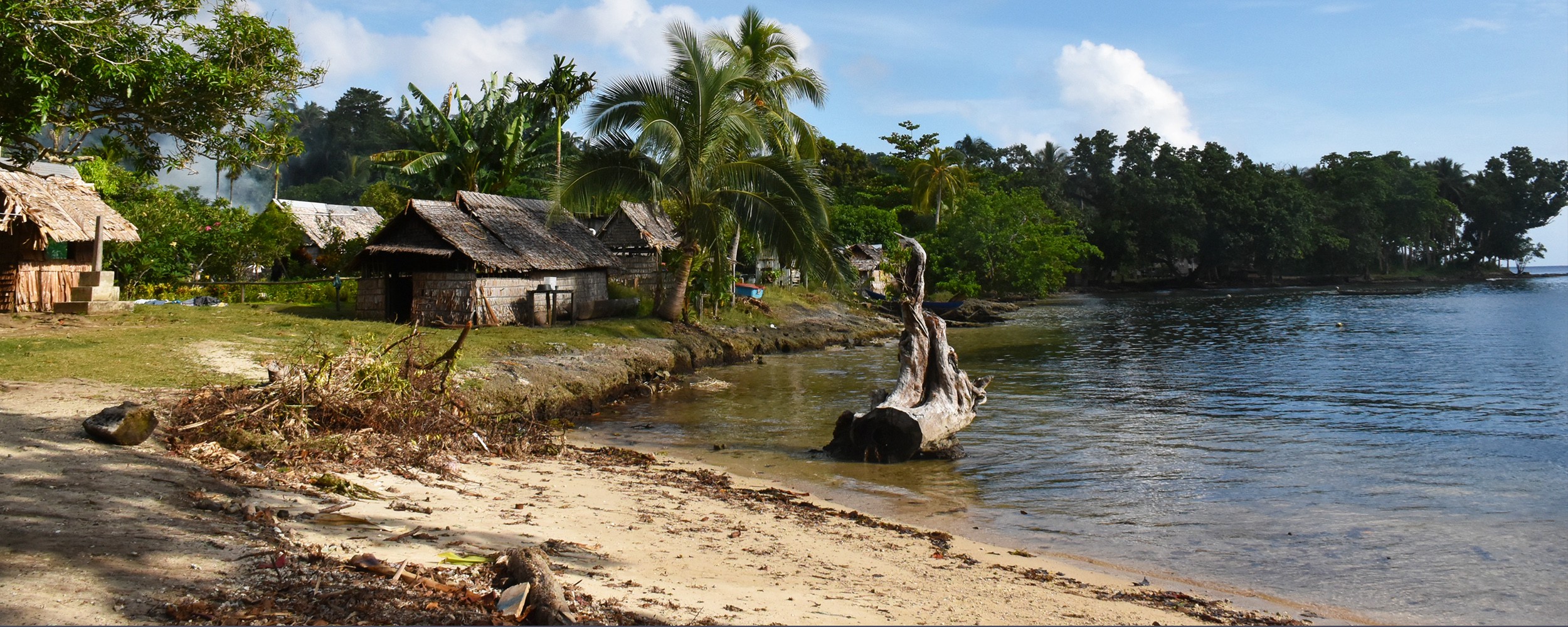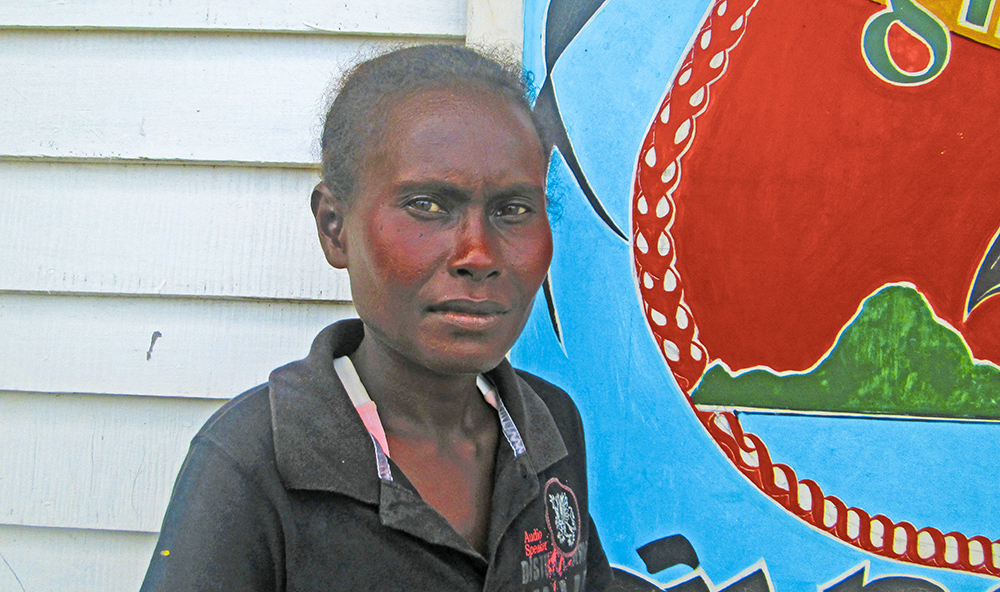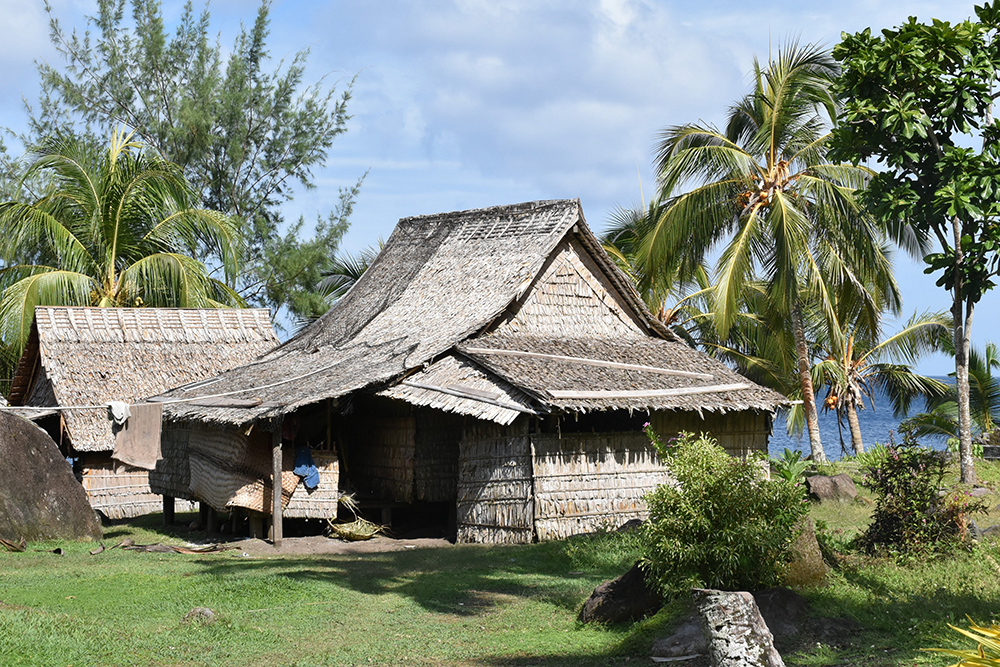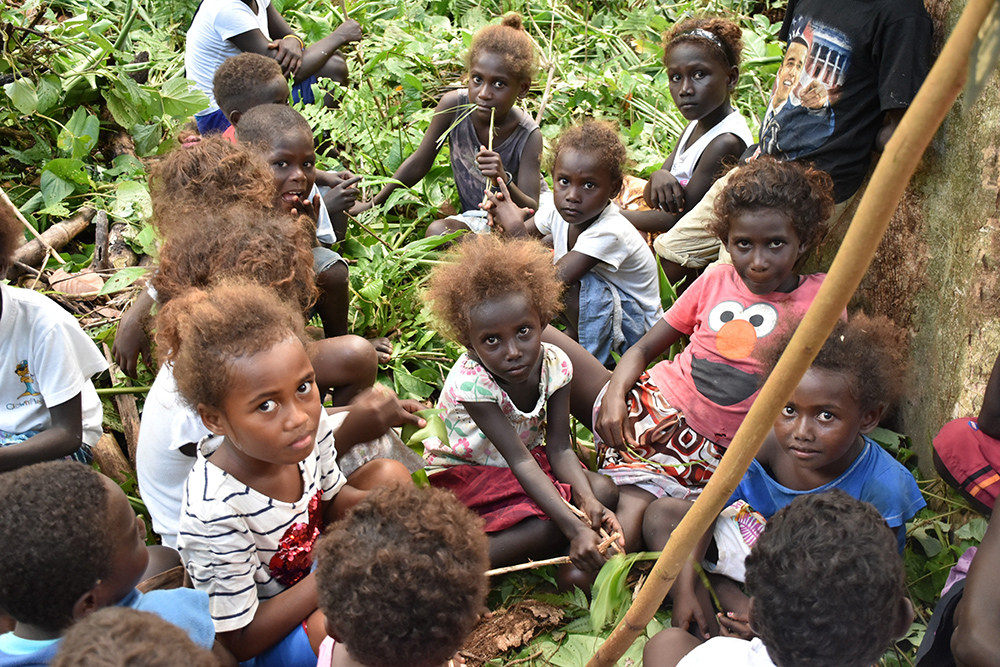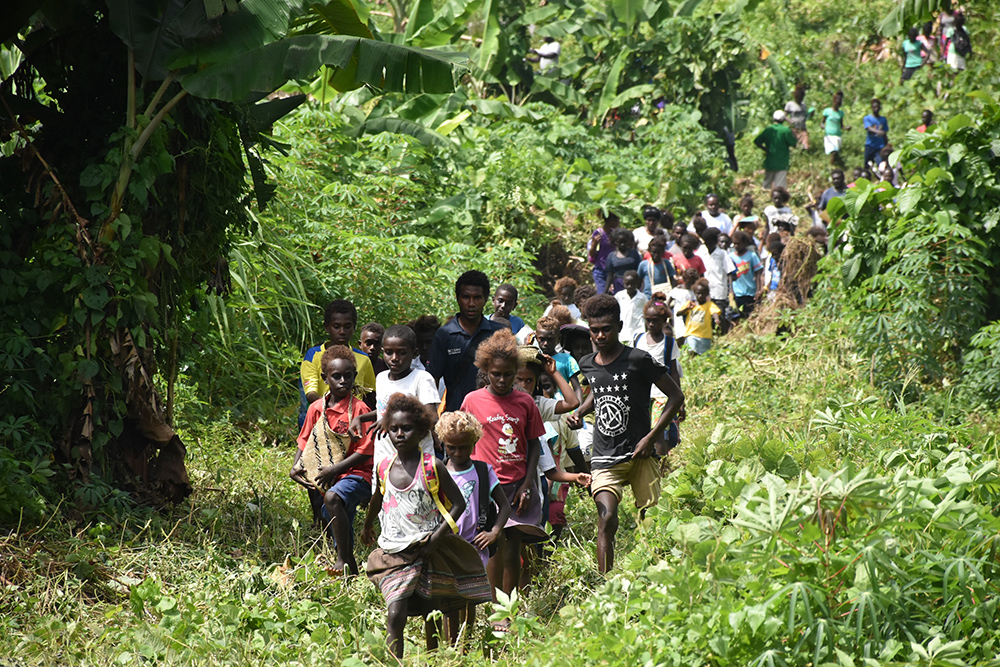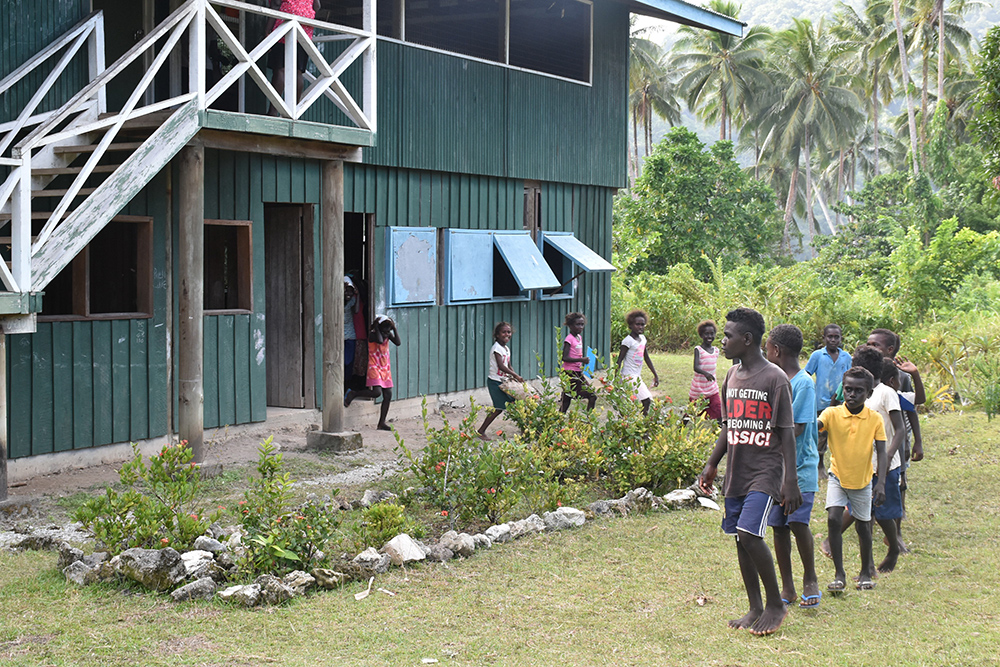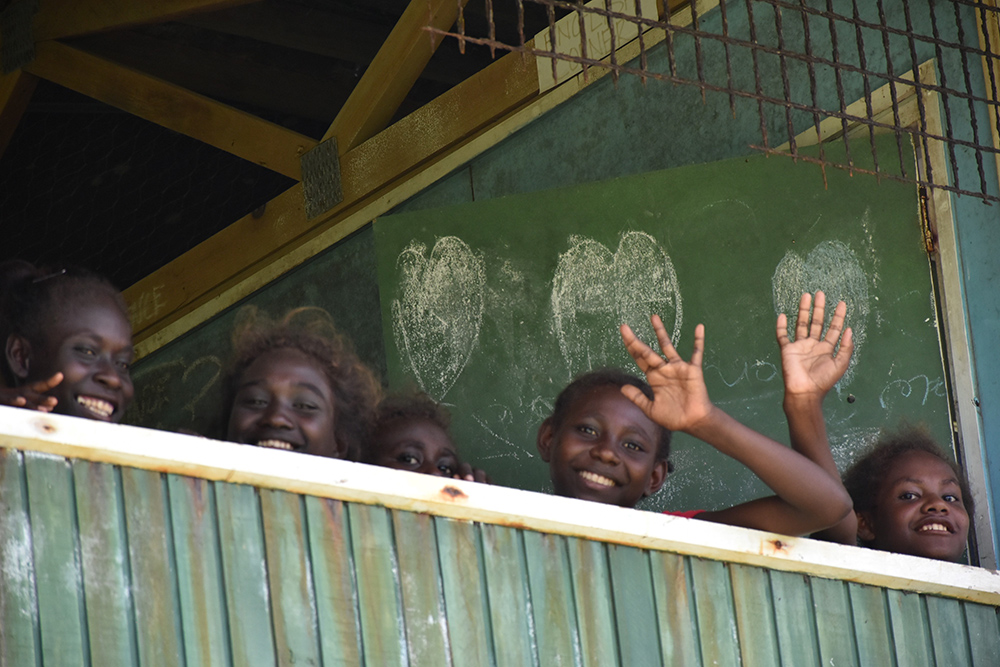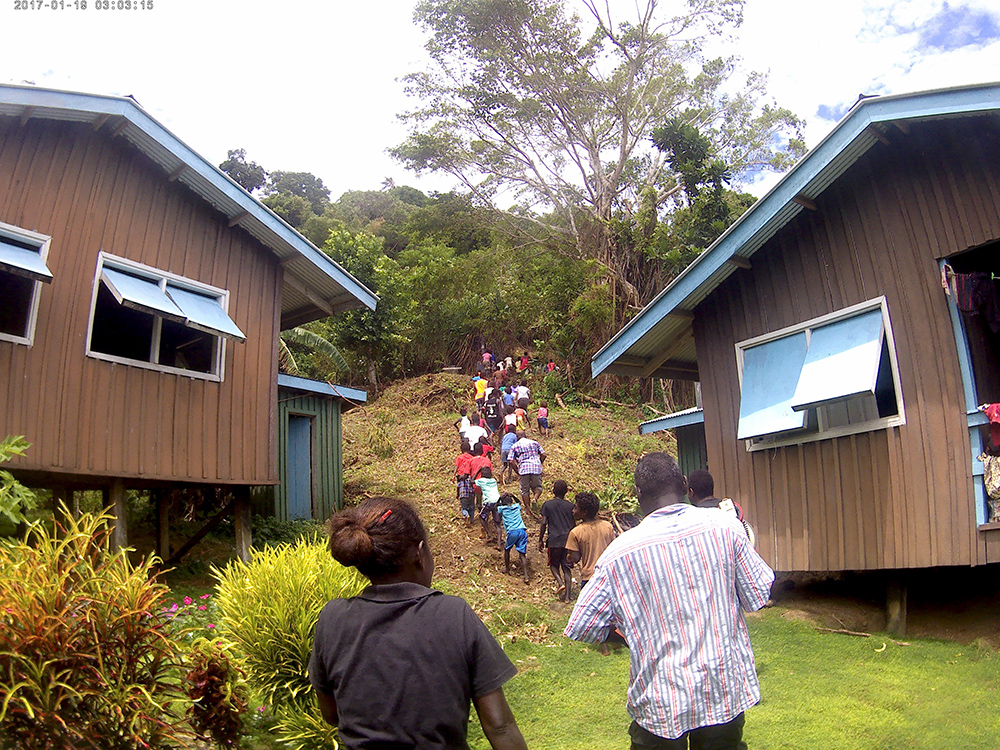“I am both a victim and a survivor of the Tsunami." - Durie Hickie’s Story
Surviving the 2007 Tsunami in the Solomon Islands
May 4, 2018
The morning of April 2, 2007 was sunny. Nothing predicted the tsunami that washed away hundreds of homes and took numerous lives. Photo: Deltina Solomon, UNDP Solomon Islands
Durie Hickie was used to earthquakes. Living in the Solomon Islands, Durie, a teacher at the Kalarao Primary School in Simbo island, had experienced around 70 quakes every year. Many of them were barely noticeable but she was aware of the risks and how to protect her life.
“We were used to earthquakes but none of them had triggered a tsunami before. We did not even know that an earthquake can generate a tsunami. The first tsunami experience was devastating because we were unprepared,” Durie Hickie said.
“We did not even know that an earthquake can generate a tsunami,” said Durie Hickie of Simbo Island. Photo: Danny Ruel, NDMO Provincial Disaster Officer
The morning of April 2, 2007 was sunny. The school day was about to start. Teacher Durie was paddling her canoe to Lengana village when a strong earthquake occurred. She saw the hills and trees shaking violently and the ocean water “boiling” around her. Fortunately, she was close to the coast, so she held on to the mangrove trees.
“After the quake, I continued to paddle along the coast and didn’t think much of it. Suddenly, I heard a loud sound, similar to that of a raging wind. I looked up at the sky expecting to see dark storm clouds, but the sky was very clear. I was terrified. I didn’t know what was going to happen, but I was afraid it was the end of the world,” Durie recalled.
A traditional leaf house in Lengana village, Simbo island. Photos: Yuko Morikawa, Japanese Embassy.
Then, Durie saw the monstrous ocean wave rushing towards her. Frozen in panic, she didn’t know what to do. She stood up, held on to the roots of the mangrove trees and facing the tsunami, she waited.
“After a couple of seconds, the massive wave hit me, throwing me off my canoe. Even the mangrove trees were uprooted and thrown ashore. I didn’t understand what was happening to me. I did not feel anything and fell unconscious,” she recalled.
“Regaining my consciousness, I found myself under a pile of debris — tree branches, leaves and logs. Only my head sticking out, my whole body was buried under the mud. I could not move. The next tsunami wave, luckily, carried the debris away and I could free my arms. I saw that my arms were cut open, bones protruded out and I was bleeding heavily. Still, I dug my body out of the mud and dragged myself towards the village. All the while, quakes continued to shake the ground, and large rocks were rolling down the hills. Narrowly avoiding the rocks, I made it to my aunt’s house. I asked for some water. As soon as I drank, my body collapsed. My aunt and other villagers carried me to safety,” Durie remembered.
Hours later, the Solomon Islands Red Cross’ medical team flew Durie Hickie to the Medical Centre in Lengana. She learned that the 12-metre high tsunami waves washed away two villages nearby her home and claimed a total of 52 lives in the Solomon Islands.
After a long recovery, Durie continued her teaching job in Kalarao Primary School. Her harrowing experience of the tsunami made her a passionate advocate for tsunami safe schools. She believes that knowing and responding to tsunami warning signs will save many lives in the future.
In 2018, Kalarao Primary School and four more schools held a tsunami evacuation drill for 770 students. Supported by the Government of Japan, the drills were organised by the National Disaster Management Office, Solomon Islands Meteorological Services, Western Province Education Authority and the United Nations Development Programme in the Solomon Islands as part of a regional project on Strengthening School Tsunami Preparedness in 18 Asia Pacific countries.
Expressing her appreciation for this project, Durie said, “Now, our school has an emergency plan, we have done evacuation drills and we know where the safe zones are near school. This all has made our future evacuations much faster and more organized.”

 Locations
Locations